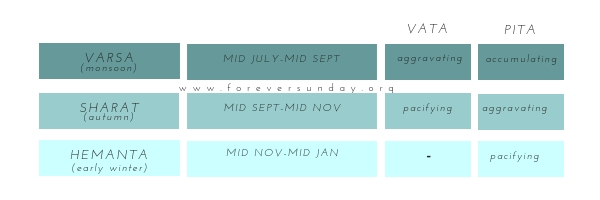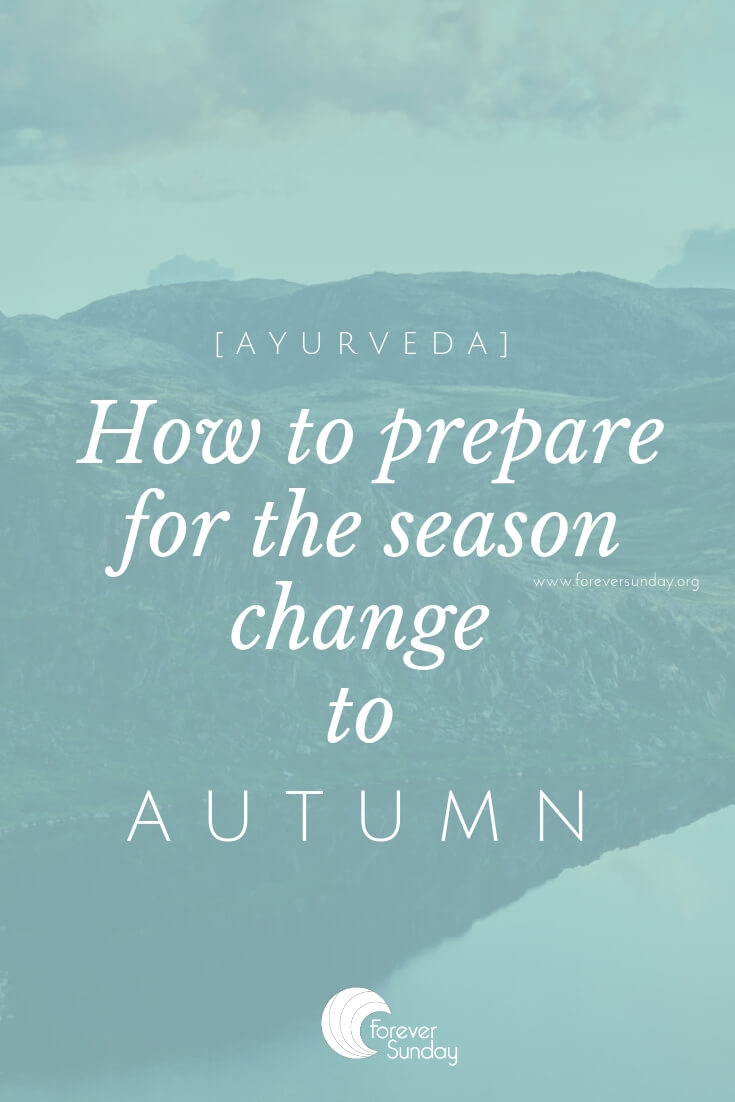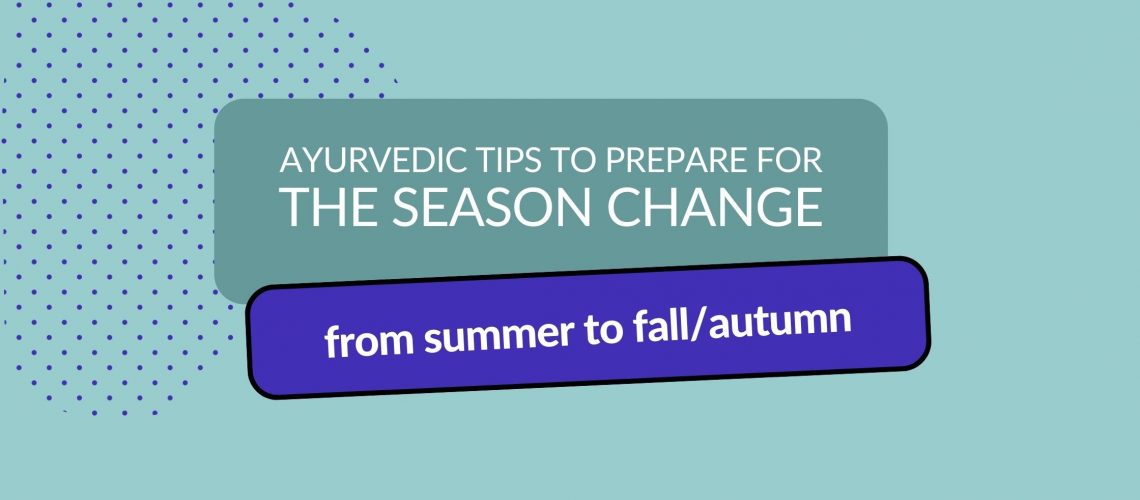If you are somewhere in the Northern hemisphere you will have seen and felt the first signs of autumn showing its face. In Portugal the summer doesn’t seem to end and while I don’t have quite enough of summer, I am sort of looking forward to some rain and cozy time in front of the fireplace too…
The cycle of nature
What happens in autumn?
Besides the shortening of the days, the sun now sits lower in the sky. Its rays are not as warming anymore and the temperature drops. The sun is in the middle of its southern course which started at the summer solstice. The strength of the moon’s rays (soma) are increasing. In ayurveda this is considered a strengthening time for the body.
Dosas in autumn
From mid September to mid November the ayurvedic autumn (Sharat) starts. During Sharat, Pita dosa that accumulated during Varsa season (mid July to mid September) starts to aggravate. Vata that was aggravated during Varsa now slowly starts to return to normal levels.
A different way to explain this is that we enter autumn with aggravated, high vata dosa and we end autumn with aggravated, high pita dosa.

The degree of aggravation of the dosas and when precisely the switch happens is different for everybody. It is important to know which energy is impacting you the most – it will depend on the climate and weather where you live, the advancing of the autumn season, your lifestyle, food choices etc.
How to make the transition to autumn easier?
Charaka says: “All diseases begin at the junction of the seasons”, so now it is more important than ever to find balance in our lives. It is preferred to make the season transition gradually and adapt your nutrition and lifestyle slowly, for instance over the course of two weeks.
1.Nutrition
Eat according to your dosa and the seasons
Ayurveda recommends eating according to your type or your dosa first and foremost (and including all the 6 tastes). The season should be a secondary consideration in managing your lifestyle. We eat according to the seasons and increase certain tastes in certain seasons to find balance. This is called ritucharya.
Transition gradually
In a few weeks you can phase out certain foods and start introducing other foods slowly. This should happen automatically as different seasonal veggies will now come out of the garden or are available in the supermarket (beware of unseasonal foods flown in from far away).
Balancing Vata
Specifically in autumn we find the sour taste more now in plants and herbs and the salty taste starts to increase as the autumn progresses. The salty taste is the one that will balance Vata gradually as autumn progresses. If you have aggravated Vata, read this post on how to balance Vata in autumn. Start with the Vata balancing protocol first and then as autumn progresses, return to this post :)
Click to read more about autumn vata balancing foods
Balancing Pita
In this post we will focus on balancing the aggravated Pita dosa, which will happen towards mid november. To balance Pita dosa and nourish our body appropriately in autumn we can favour the bitter, astringent and sweet tasting foods more.
Seasonal use of foods (pita dosa balancing autumn foods)*
Grains
Amaranth, barley, basmati rice, bulgur, brown rice, millet, oats, quinoa
Vegetables
bell pepper, broccoli, cucumber, lettuce, okra, peas, squash
Fruits
apples, berries, coconut, dates, fresh figs, grapes, melons, pears, pomegranate, watermelon
Legumes
aduki beans, black beans, black-eyed peas, chickpeas, brown lentils, lima beans, mung beans, pinto beans, soy beans, split peas

Nuts and seeds
Avoid most nuts
Coconut, poppy seeds, roasted pumpkin or sunflower seeds are ok to use (not in excess)
Dairy
If dairy is part of your diet you can have unsalted butter, cottage cheese, raw cow milk
Oils
Favour canola, coconut, soy and sunflower oil
Avoid heating oils (as in increasing heat in the body) such as mustard oil and almond oil
Sweeteners
Favour dates, maple syrup, sugarcane juice, sweet fruits
Herbs
Favour coriander (cilantro), cumin, curry leaves, dill leaves, fennel (fresh wild fennel seeds are now in season in Portugal!), mint and peppermint, saffron, turmeric
*This list is by no means exhaustive!
2.Lifestyle
Activity
To balance pita Ayurveda recommends walking or other light exercise every day and energy balancing activities like yoga and tai chi.
Self massage
It is a good idea to – at least once per week, but daily if your lifestyle allows it – using sandalwood or coconut oil to massage yourself. After you let the oil sink in for a little while you can take a shower to rinse off the residue.
To balance Pita avoid:
- heavy meals/indigestion
- spicy food
- excess oil/fatty foods
- excess sun or heat exposure (short steam baths are fine)
- excess exercise
- angering oneself
- alcohol and cigarettes
So… the worst thing you could do in this time is overeat on a spicy oily curry, then engage in a competitive sport, get angry about something that happens and drink a glass of beer or wine to calm the nerves afterwards ;-)
Herbs
Use these herbs in teas or baths:
- chamomile
- dandelion
- fennel
- jasmine
- lavender
- lemon balm
- peppermint
Avoid:
- ginseng
- cloves
- eucalyptus
What is the first thing you will do to transition to autumn?
Feel free to ask any questions in the comments!





